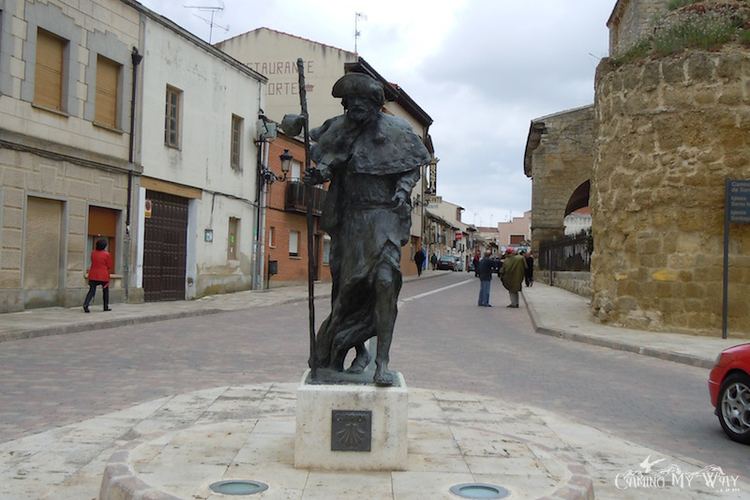Country Spain Demonym(s) Carrionéses Area 63.37 km² Population 2,198 (2014) | Elevation 830 m (2,720 ft) Time zone CET (UTC+1) Local time Sunday 7:26 PM | |
 | ||
Weather 11°C, Wind W at 19 km/h, 84% Humidity Points of interest Monasterio De San Zoilo, Iglesia de Santa María del, Iglesia De Santiago | ||
Carrión de los Condes ([kaˈri̯on de los ˈkondes]) is a municipality in the province of Palencia, part of the Autonomous Community of Castile and León, Spain.
Contents
- Map of CarriC3B3n de los Condes Palencia Spain
- History
- Jewish presence in Carrin
- Main sights
- Twin towns
- References
Map of Carri%C3%B3n de los Condes, Palencia, Spain
It is 40 kilometers from Palencia, on the Way of Saint James.
History
Carrión de los Condes was taken from the Moors by Alonso Carreño around 791–842. Don Carreño took the name Carrión at this time.
Carrión de los Condes was the home of Diego and Fernán González, fictitious sons-in-law of El Cid in the poem El Cantar de Mio Cid (English: The Song of My Cid).
In 1209, Hospital de la Herrada was established by Gonzalo Rodríguez Girón, a Palencia tycoon who became steward of the king, to provide assistance to the Jacobean pilgrims and other travelers. It had considerable influence and power in the area in the 13th and 14th centuries.
Jewish presence in Carrión
The town was inhabited by Jews at an early date. Although they outnumbered the Christians both in numbers and in property, they submitted in 1126 to the victorious King Alfonso VI, who showed himself favorably disposed toward them.
In 1160 many of them settled in the neighboring city of Palencia.
The Jewish community of Carrion was so large in 1290 that it paid 92,000 maravedis in taxes, not much less than the amount paid by the community of Burgos. In Carrion, as elsewhere, the Jews were persecuted. Delegates from the city appeared before King Alphonso of Castile (probably Alfonso the Wise), informing him that the Christians of the city, because of a groundless suspicion, had risen against the Jews and killed two of them; that thereupon the Jews had sought refuge in the palace of the prince, who was absent at the time, and, when the Christians followed in pursuit, had escaped through a secret door leading into the court, and locked their pursuers in.
